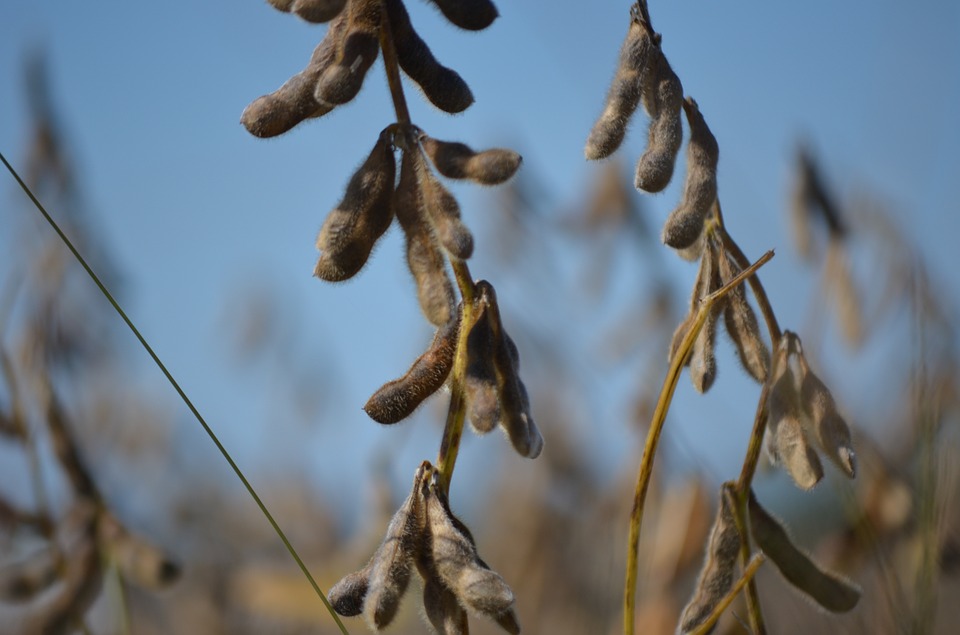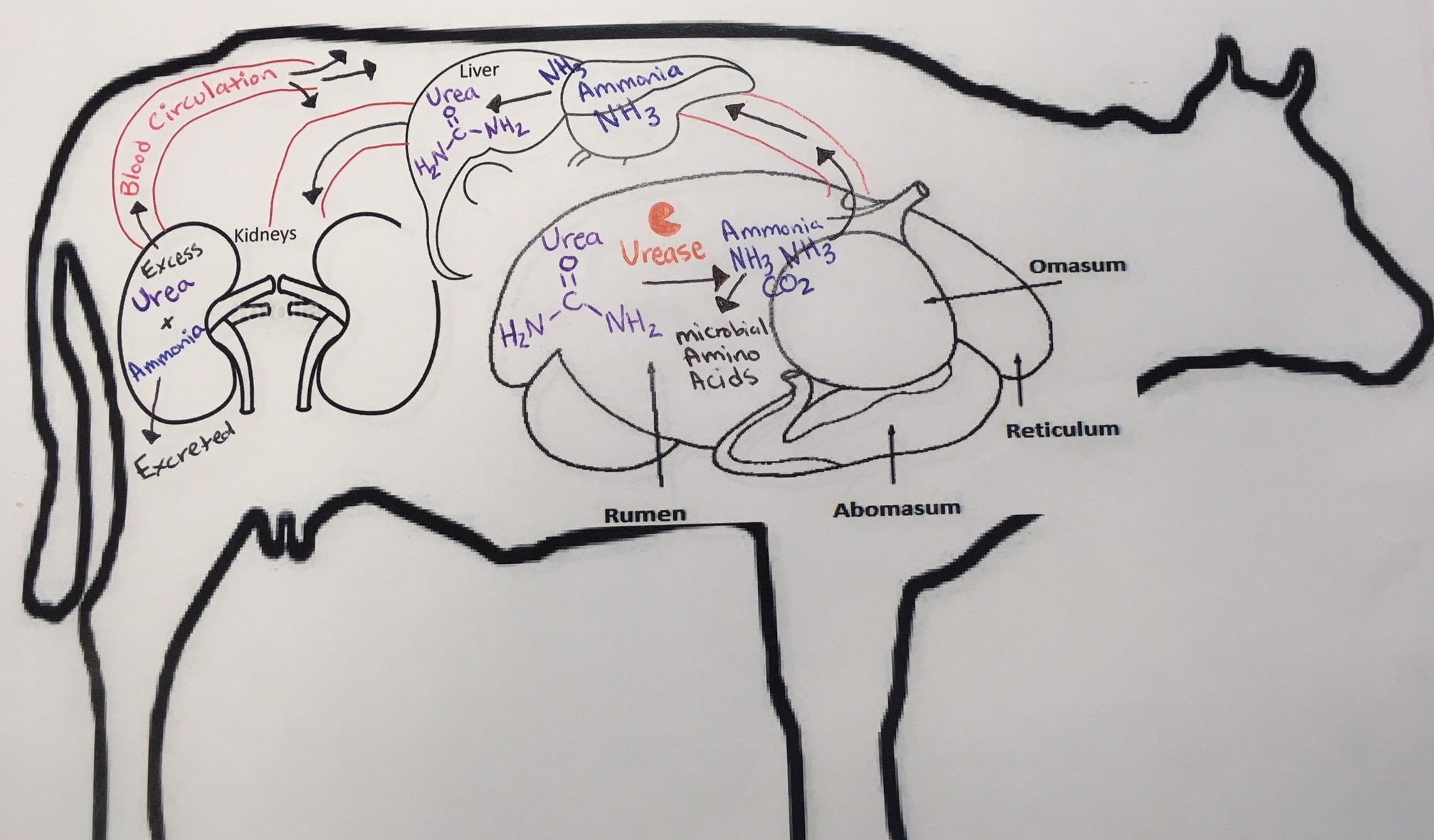
Non-Protein Nitrogen and Soybeans [a Deadly Combination]
Every once in awhile I get asked if soybean plants or stubble should be tested for nitrates. Soybeans are legumes like alfalfa, and like alfalfa, under stressed conditions can accumulate a toxic concentration of nitrates. Soybeans are listed as nitrate accumulators by the Iowa Beef Canter. Therefore, if you are having doubts, send a sample to Ward Laboratories, Inc. for a test to make the best possible feeding decision.
Nitrates or Non-Protein Nitrogen?
Having received inquiries about nitrates in soybeans, I was reminded of a cow that got out into a soybean field and died of suspected nitrate poisoning. However, when the soybean plants were tested, low nitrate concentrations were found. Upon review of the animal’s diet history, non-protein nitrogen was consumed before the cow got out into the bean field. Concluding that the more likely cause of death in the case of that specific cow was non-protein nitrogen poisoning.
Non-Protein Nitrogen Poisoning
Non-protein nitrogen poisoning occurs when the urea cycle is overloaded. First, the ruminant animal consumes non-protein nitrogen. Typically, non-protein nitrogen is in the form of urea in a supplemental feed. If fed at high concentrations urea itself can be toxic. Then, urease produced by rumen microbes converts the urea to ammonia. Ammonia is a form of nitrogen that microbes can use to produce amino acids and ultimately protein for their own population growth.
When too much ammonia is present in the rumen, it is absorbed through rumen epithelia and transported through the blood stream to the liver. In the liver, ammonia is converted back to urea and transported to the kidneys for excretion. When the kidneys are overloaded with urea and ammonia it continues to circulate in the blood stream. As a result, animals begin to have facial muscle spasms, frothy salivation, bloat or abdominal pain, labored breathing, frequent urination and weak staggered walking. Often urea poisoning results in death.

Grazing Soybeans
So, what does this have to do with a cow getting out in a bean field? Soybeans produce the enzyme urease. When a ruminant animal consumes urea in combination with raw soybeans, the concentration of enzyme is no longer a limiting factor in the rate that urea is converted to ammonia. The rumen microbes can not keep up and the urea cycle becomes overloaded with ammonia and urea circulating in the blood stream. This occurs despite the animal not consuming a toxic level of non-protein nitrogen.
This is one of the reasons why soybean meal is often sent to Ward Laboratories, Inc to check the activity level of the urease enzyme. Soybean meal is processed and heated to high temperatures denaturing or melting the enzyme, thereby deactivating it. whole soybeans can be a great source of crude protein (approximately 40% crude protein on a dry basis). So, if you plan to feed raw soybeans, ensure they have been sufficiently heat treated. Otherwise, do not also feed a non-protein nitrogen supplement. Additionally, do not feed a supplement containing urea when feeding a baled soybean stubble containing leftover beans, ensiled soybeans or grazing failed soybean crop residues. Soybeans and urea rarely cross paths because both are used as protein sources. However, when they do death losses are likely to occur.
In conclusion, use caution when grazing soybean stubble or feeding harvested soybean forage.
- Remove supplements containing non-protein nitrogen from their diet several days prior to grazing soybean residue.
- Read supplement labels carefully
- DO NOT offer any supplements containing a non-protein nitrogen source such as urea or ammonia.
- DO NOT ammoniate baled soybean forages with bean pods present.
